NCERT Solutions for Class 10 Science Chapter 11 – Electricity
NCERT Solutions for Class 10 Science Chapter 11 – Electricity are essential for understanding key Physics concepts in the CBSE curriculum. These well-structured answers help students grasp topics like electric current, resistance, Ohm’s law, series and parallel circuits, and heating effect of current. Designed as per the latest syllabus, these solutions strengthen conceptual clarity and improve exam preparation. Ideal for revision and practice, they encourage logical thinking and scientific understanding, making them a valuable study tool for scoring well in Class 10 Science exams.
NCERT Solutions For Class 10 Science – Electricity – Exercise Images
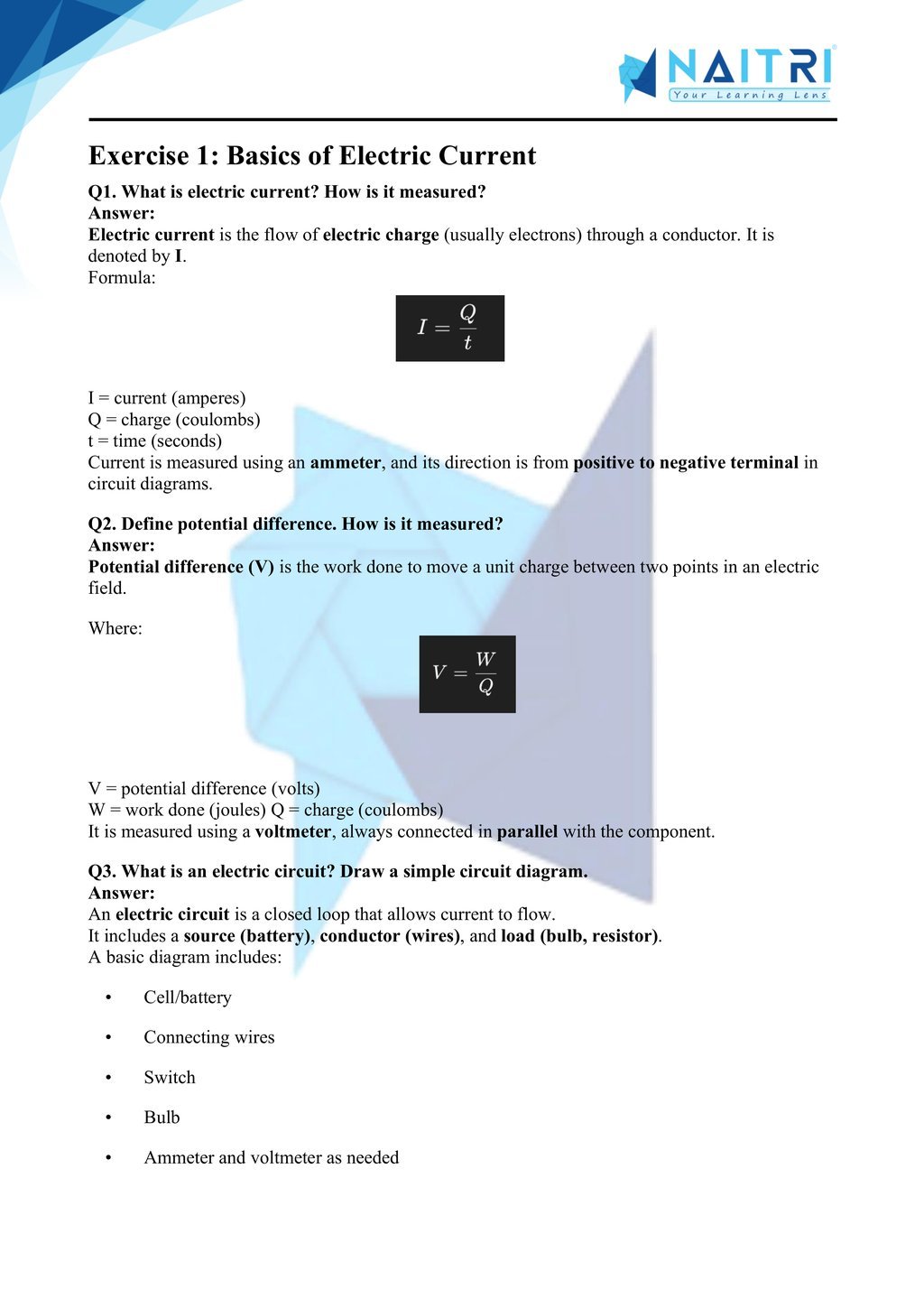
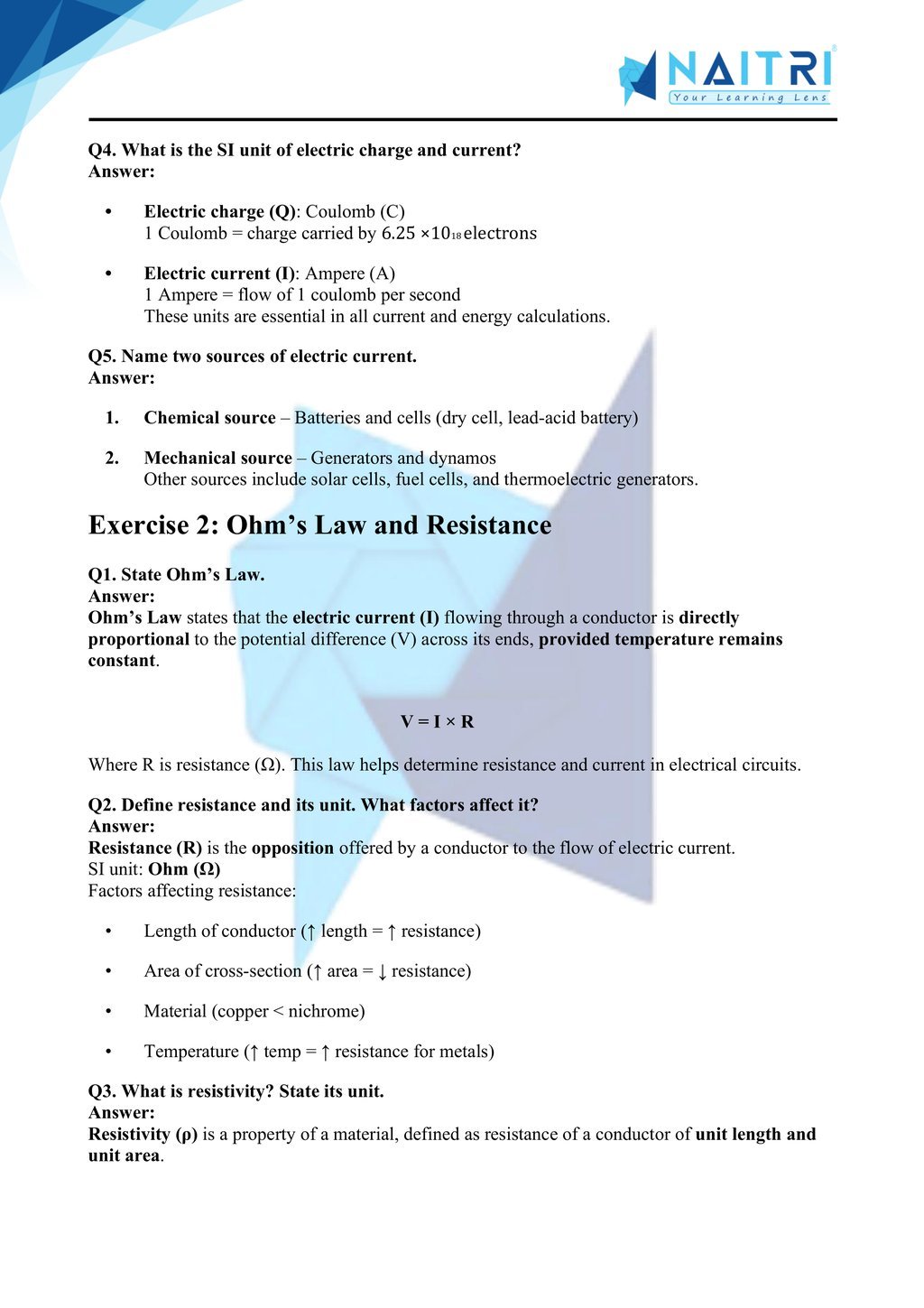
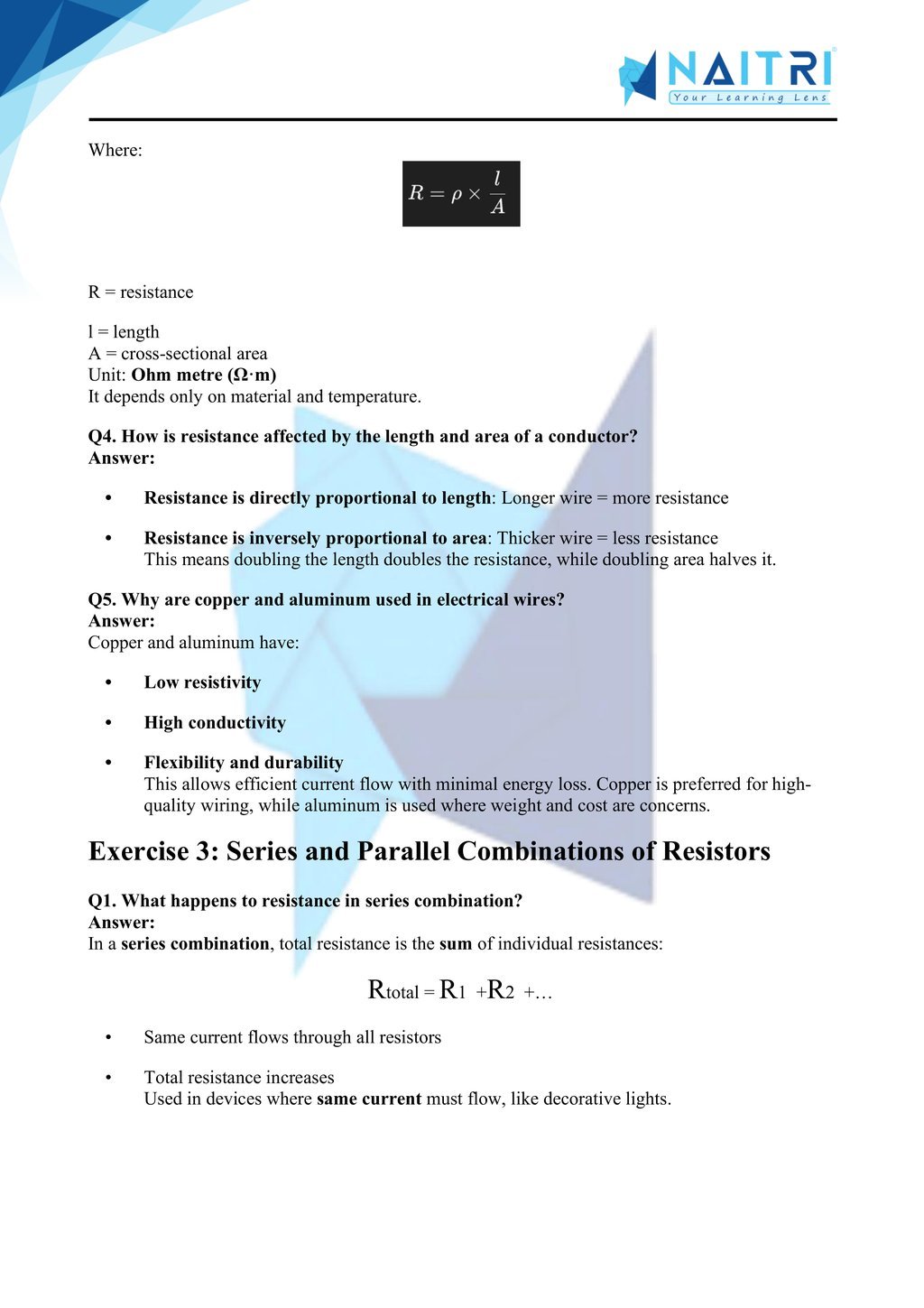
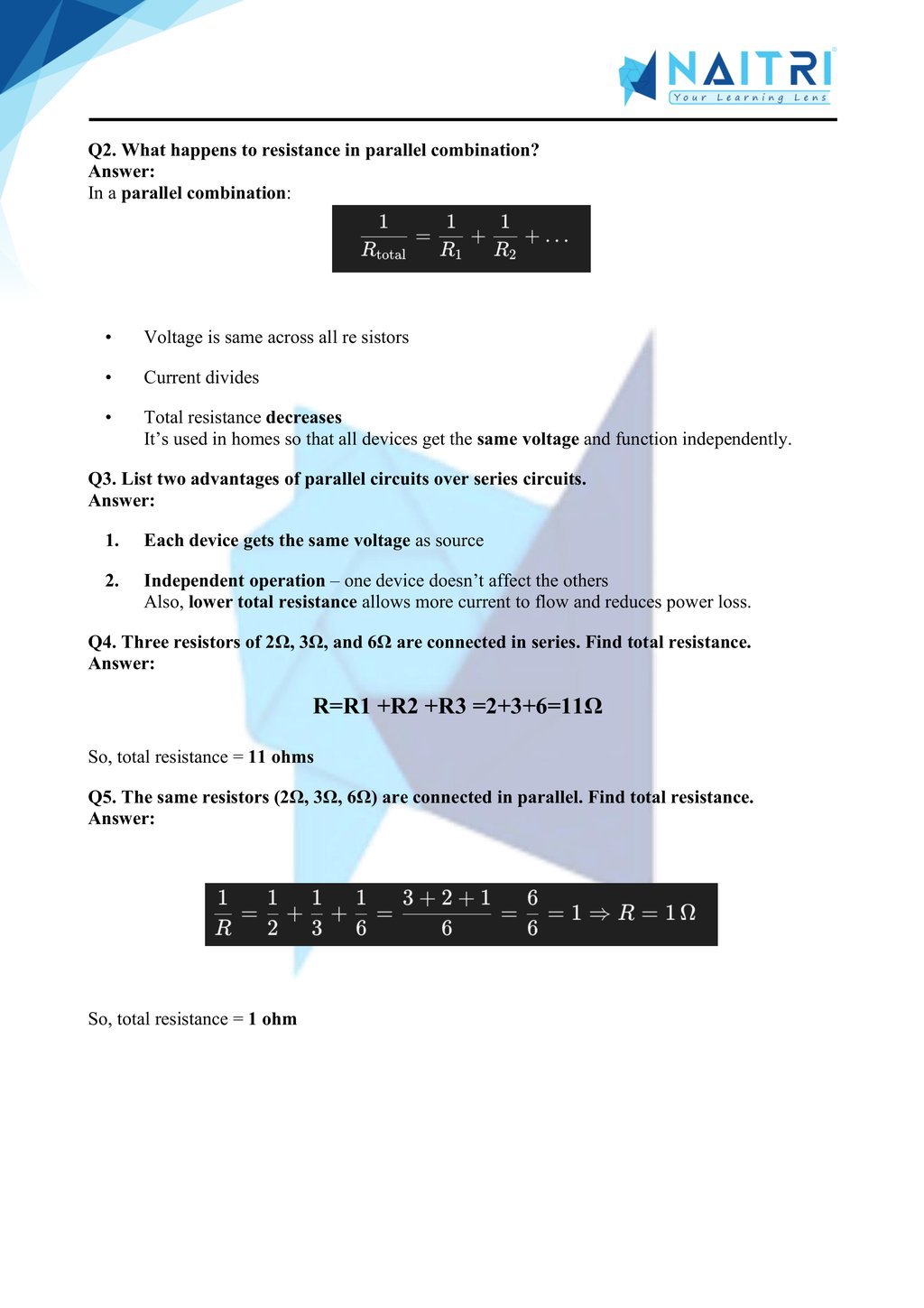
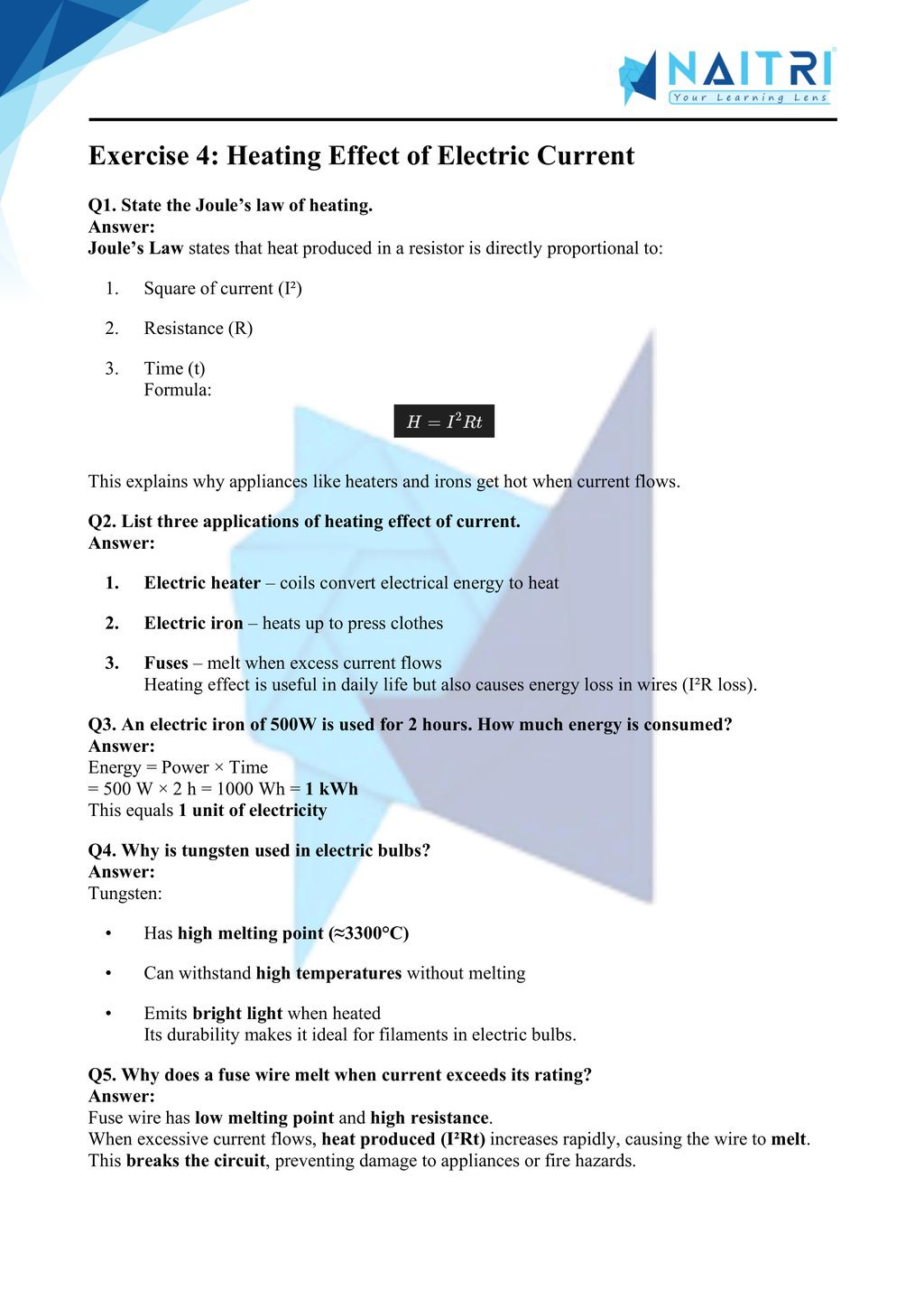

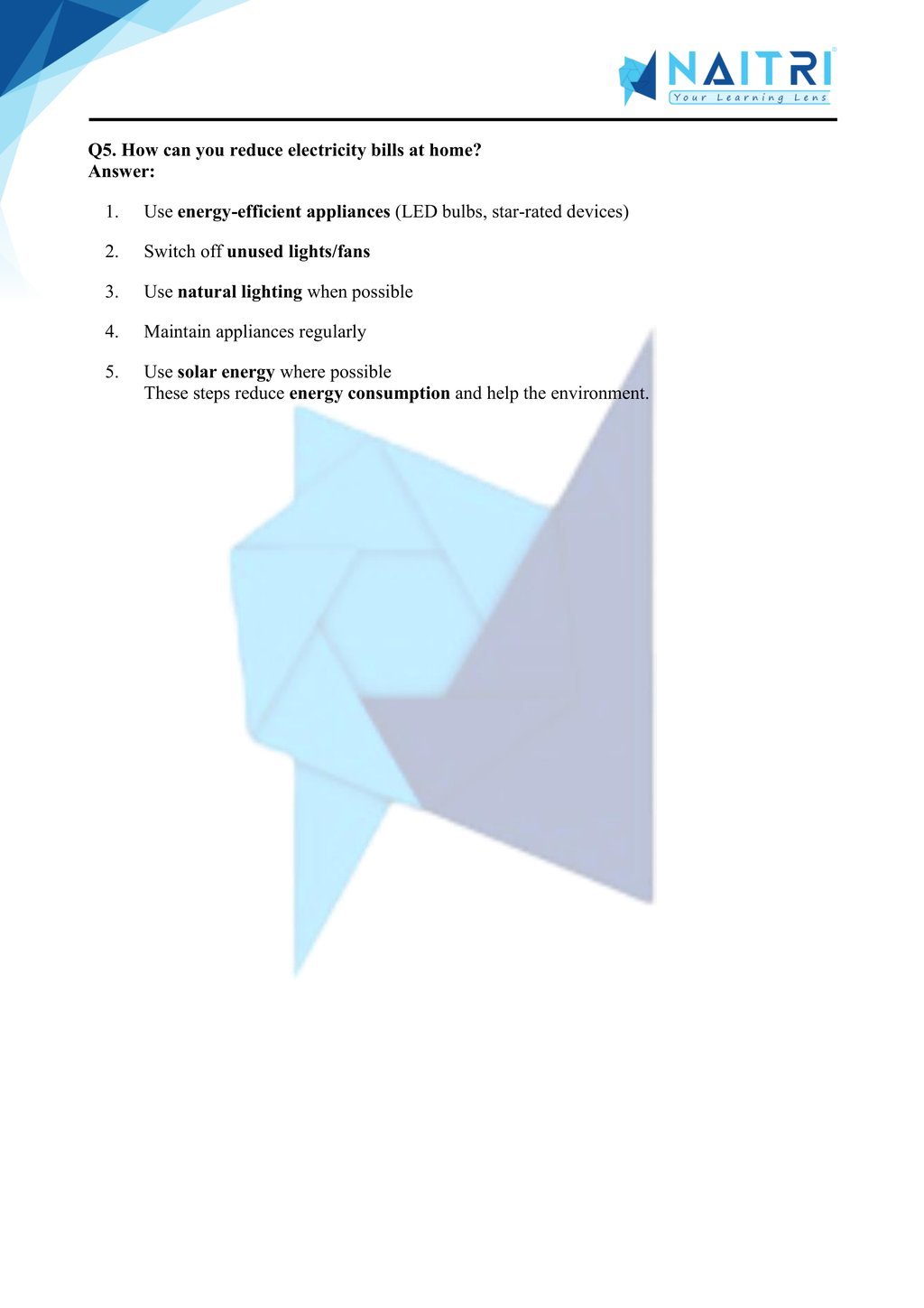
Experience Science Like Never Before – With AR!
Understanding Electricity is now more exciting and immersive! With the NAITRI App, you can explore complex science concepts through Augmented Reality (AR). Watch currents flow, circuits connect, and resistance change in real time — right in front of you. Our AR-powered lessons make learning interactive, 3D, and fun, helping you retain concepts better and enjoy every topic.



Visualize . Interact . Understand . The future of learning is here
Electricity – Important Questions with Answers
1. Define electric current and its SI unit.
Answer: Electric current is the rate of flow of electric charge through a conductor. It is measured in amperes (A). One ampere is one coulomb of charge flowing per second.
2. What is potential difference? Give its unit.
Answer: Potential difference is the work done to move a unit charge from one point to another. Its SI unit is volt (V), defined as 1 joule per coulomb (J/C).
3. Define Ohm’s law. Write its mathematical form.
Answer: Ohm’s law states that the current through a conductor is directly proportional to the voltage across it, provided temperature remains constant. V = IR, where V is voltage, I is current, and R is resistance.
4. What is resistance? On what factors does it depend?
Answer: Resistance is the opposition offered by a conductor to the flow of electric current. It depends on the material, length, cross-sectional area, and temperature of the conductor.
5. Define resistivity. Give its unit.
Answer: Resistivity is the resistance offered by a material of unit length and unit cross-section. Its SI unit is ohm meter (Ω·m). It is a characteristic property of materials.
6. State the difference between resistance and resistivity.
Answer: Resistance depends on the object’s dimensions and material, while resistivity is a material-specific constant, independent of the object’s size and shape.
7. What happens to resistance when the length of wire is doubled?
Answer: Resistance increases as it is directly proportional to the length. If the length is doubled and area remains same, resistance also doubles: R ∝ L.
8. How does temperature affect the resistance of a conductor?
Answer: As temperature increases, the resistance of a metallic conductor increases due to more collisions between free electrons and atoms, obstructing the flow of current.
9. State the advantages of using a parallel circuit in homes.
Answer: In a parallel circuit, each appliance gets the same voltage, other devices continue working if one fails, and it allows separate control and reduced total current.
10. What is an electric circuit?
Answer: An electric circuit is a closed loop through which electric current flows. It includes components like power source, conductors, switch, and load (resistor or appliance).
11. Define electric power and give its SI unit.
Answer: Electric power is the rate at which electrical energy is consumed or converted in a circuit. Its SI unit is watt (W), where 1 W = 1 joule/second.
12. Write the formula for calculating electric power.
Answer: Electric power can be calculated using:
P = VI (power = voltage × current),
or P = I²R (current squared × resistance),
or P = V²/R (voltage squared divided by resistance).
13. Define 1 kilowatt-hour (kWh). How is it related to joules?
Answer: 1 kWh is the energy consumed when a 1000-watt appliance runs for one hour.
1 kWh = 1000 watts × 3600 seconds = 3.6 × 10⁶ joules.
14. What is the role of a fuse in an electric circuit?
Answer: A fuse is a safety device with a thin wire that melts and breaks the circuit when excessive current flows, protecting appliances from damage or fire.
15. State the difference between series and parallel circuits.
Answer: In series, current is the same but voltage divides. In parallel, voltage is same across each branch but current divides. Parallel is preferred for household wiring.
16. Why is tungsten used in bulb filaments?
Answer: Tungsten is used because it has a high melting point (~3380°C) and resists oxidation at high temperatures, making it ideal for withstanding intense heat in electric bulbs.
17. How does a voltmeter differ from an ammeter?
Answer: A voltmeter measures voltage and is connected in parallel. An ammeter measures current and is connected in series. Voltmeter has high resistance; ammeter has low resistance.
18. What is the heating effect of electric current?
Answer: When current passes through a resistor, electrical energy is converted into heat. This is used in devices like electric heaters, irons, and toasters, as explained by Joule’s law.
19. State Joule’s law of heating.
Answer: Heat produced (H) = I²Rt, where I is current, R is resistance, and t is time. It states that heat is directly proportional to square of current, resistance, and time.
20. What is an electric cell? How does it work?
Answer: An electric cell is a device that converts chemical energy into electrical energy. It works by creating a potential difference between its two terminals, driving current in a circuit.
21. Why are copper and aluminium used in electrical transmission?
Answer: Both have low resistivity and high conductivity, allowing easy current flow. Aluminium is preferred in long-distance transmission due to its lower weight and cost compared to copper.
22. What is meant by short circuit?
Answer: A short circuit occurs when live and neutral wires come into direct contact, allowing a large current to flow, possibly causing sparks, fire, or damage to the circuit.
23. Why is earthing necessary in household wiring?
Answer: Earthing provides a low-resistance path for electric current in case of leakage or fault, protecting users from electric shocks and preventing damage to appliances.
24. How does resistance change in a wire if its area is doubled?
Answer: Resistance is inversely proportional to cross-sectional area. If area is doubled, resistance becomes half, assuming length and material remain constant.
25. Explain how electricity is billed in homes.
Answer: Electricity usage is measured in kilowatt-hours (units). Total energy used is multiplied by the cost per unit, including fixed charges, taxes, and subsidies, to calculate the monthly bill.
Electricity introduces electric current, potential difference, resistance, and Ohm’s Law. Students learn how series and parallel circuits function, how energy is calculated, and how household electric bills are derived. These concepts form the basis for understanding electrical systems in homes, industries, and electronic devices.
Related Chapters You May Like
Download Naitri App
Easy, Visual Learning — Right on Your Phone
Learn with Augmented Reality! The Naitri app makes CBSE and MP Board concepts interactive and fun — even in low-resource settings. Watch lessons, complete homework, take tests, and track progress — all in one place. Anytime. Anywhere.
Available on








